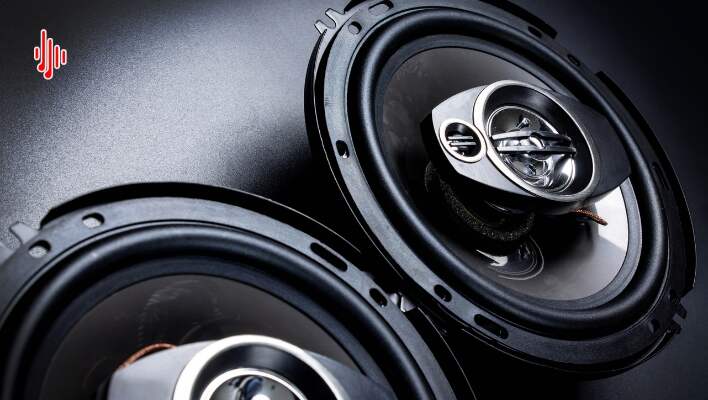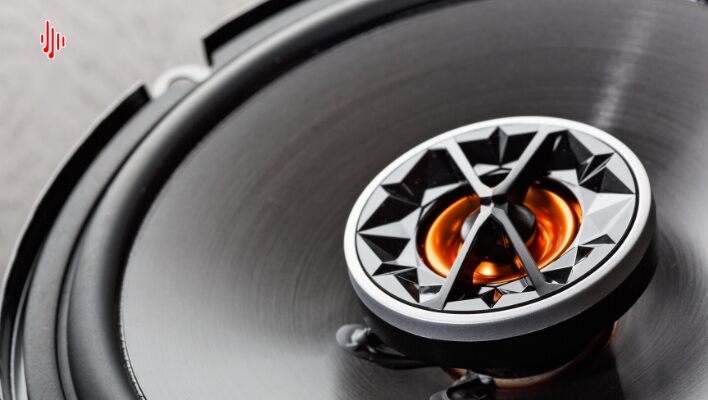Car speakers have come a long, and they have since evolved from a basic radio receiver equipped with a single speaker to complex loudspeakers. Today, in-car entertainment systems are composed of sophisticated speakers capable of reproducing high-quality sound from over-the-air sources as well as recorded formats.
If you are looking to upgrade your factory car speakers, you’re likely to come across three distinct speaker types- 2 way, 3 way, and 4 way speakers. These terms are used to describe the number of drivers or the range of audio frequencies covered by different coaxial speakers.
When purchasing car speakers, it is critical to understand the options that are available in the market before settling on any speaker setup. If you are not an experienced audiophile, it might be hard to tell the difference between the three speaker constructions, unless you compare them side by side.
Understanding coaxial speakers

Coaxial speakers hold multiple drivers into a single housing, a design that helps to save money and space. These speakers are popular among car speaker manufacturers who are always looking for ways to cut upfront production costs.
Additionally, coaxial speakers provide a quick upgrade to anyone looking to upgrade stock speaker systems but are on a budget. The good thing about coaxial speakers is that they are plenty of aftermarket options to choose from, plus they are way cheaper than their component counterparts.
The reason why coaxial speakers are popular among car manufacturers is because each speaker provides a complete range of audio frequencies to suit different car audio applications. This implies that they offer a noticeable difference in terms of sound quality when compared to factory systems.
In this article, we’ll dwell on the key difference between 2 way, 3 way, and 4 way speakers, so you’ll know which speaker configuration is best for you. Let’s get into the details!
2 Way Speakers
Two-way speakers, as the name suggests, feature two distinct frequency bands. This may sound a bit obvious, but it is as simple as that. A 2 way speaker comes with two drivers in it, with each driver designed to cover a separate frequency range.
The first driver is often the woofer, whose work is to reproduce the lows/ bass frequencies. The woofer is exclusively built to reproduce low frequency sounds and all other frequencies that are below the tweeter/high end range.
The second driver is the tweeter, which is tasked with the responsibility of reproducing the highs or frequency sounds above the bass. The idea behind this design is to allow you to enjoy deep bass and clearer highs as well.

Advantages of 2 way speakers
- A two-way speaker system requires a compact speaker box which translates to a small footprint
- Less power requirements
- Effortless to install – you can install the speakers almost everywhere
- Easy crossover setup
Disadvantages of 2 ways speakers
- Insufficient midrange frequency detail
- Limited bass output –you’ll still need a separate subwoofer to enhance the bass
3 Way Speakers
A three-way speaker configuration is a setup that contains three drivers in each speaker. Each driver is designed to produce a distinct frequency range namely; low-end sounds, mid-range frequencies, and high frequencies.
Just like a two-way speaker, a typical 3-way speaker comes with a woofer for the low-end sounds and a tweeter for the higher frequencies. However, the latter includes a third mid-range driver whose work is to reproduce the mid-range frequencies (vocal range).
The primary advantage that 3 way speakers have over their 2 way counterparts is their ability to customize sounds for different genres of music. Most high-end three-way speakers provide a balanced sound output no matter what type of music you’re playing.
Advantages of 3 way speakers
- Better sound quality overall- the additional driver allows the woofer to produce the low frequencies only
- Great for vocals and mid-range instruments
- High-quality crossover, which translates to less sound distortion
- A separate subwoofer is not always necessary
Disadvantages of 3 ways speakers
- Slightly more expensive than 2-way setups
- Big and bulky speaker enclosures
4 Way Speakers
A 4 way speaker is almost similar to its 3 way counterpart in terms of the range of frequency it covers. However, a 4 way speaker includes an extra tweeter (often a super tweeter) to enhance the high-end sounds.
So, with a 4 way speaker, you can enjoy a wide range of sound across all frequencies while allowing you to experience more of the higher-end frequencies. This is because, the second tweeter offers better high-end sounds, but the difference in terms of sound quality is very minimal.
For an average audiophile looking to upgrade their factory speakers, 3 way speakers are often sufficient. The 4 way speakers are often a marketing gimmick used by speaker manufacturers and a way to raise the price. However, they still provide a fuller sound, but to get the most out of your 4 way speaker system, you may want to avoid speakers with cheap drivers at all costs.
Advantages of 4 way speakers
- Improved higher sound accuracy
- Wider and clearer range
- Incredibly clear sound across the frequency range
- Better bass output
Disadvantages of 4 way speakers
- When it comes to 3 way vs 4 way speakers, the latter are less popular meaning there are fewer options in the market
- Four-way speakers are generally more expensive
- Requires more space
Understanding the speaker crossover

A speaker crossover is a form of audio filter that helps to split the audio signal into its constituent frequency ranges. In other words, a crossover network takes up a single input signal and divides it up before sending each signal to the respective loudspeaker drivers. Speaker crossover is critical as it helps provide a uniform signal while minimizing the likelihood of sound distortion.
In a 2 way speaker setup, the crossover split the signal input into two, where one signal is sent to the woofer and the second one to the tweeter. Similarly, in three-way setups, the signal is divided between the woofer, mid-range, and high-range frequencies.
Ideally, the purpose of a crossover is to help supply each speaker driver with the signal range that it can handle best. For example, a good crossover help ensures that the woofer only receives the lower frequencies while directing the higher ones to the tweeter.
Without a well-established crossover network, the tweeter will strain to reproduce bass frequencies sent to it. Furthermore, the woofer doesn’t have the capacity to handle treble tones, so sending such tones to it will only create a distorted sound. This is where a crossover comes in to help separate the signal input so that each driver receives the audio signal it can handle best.
Which is Configuration is Better- The Verdict
When you’re looking to update your car factory speakers, you’ll need to understand the benefits that come with speaker configuration before settling on your most preferred choice. It will also help you avoid the frustrations that come with choosing the wrong speaker type for your vehicle.
That said, a speaker with fewer drivers does not always mean it is an inherently low-quality speaker and vice versa. For instance, some high-end two-way speakers could produce better sound quality than cheaply made three or four-way speakers.
The crossover configuration is what separates an average speaker setup from hi-fi grade speaker construction. Configuring your speaker crossover system properly helps ensure that each driver provides optimal playback while ensuring that there is no frequency gap.
With a good and well-configured crossover, a two-way speaker might perform exceedingly well than a three or four-way speaker with cheaply made drivers. The latter could be fitted with a larger frequency range, but without a good crossover, the sound output will be less appealing.
However, when it comes to the debate 4 way vs 2 way speakers, the four-way options will definitely deliver a wider range of sounds. What’s more, speakers with more drivers provide more detail, especially in the mids and highs, but more drivers do not necessarily translate to better sound quality.
Most high-end speaker setups come in a three-way design, which accounts for high, mid, and low-range sounds. The 2 way vs 4 way speakers are also popular, but they are not quite common. However, when used properly, the two can be extremely efficient in all frequency ranges.
The Takeaway!
At the end of the day, it doesn’t matter what speaker configuration you have. The common denominator of these speakers is the ability to play music from a wide range of sources, including CDs, internet radio, portable music players, hard-disk drivers, USB drivers, live streaming sources, etc. Each of these speaker constructions delivers decent results, so it is just a matter of personal preferences.
